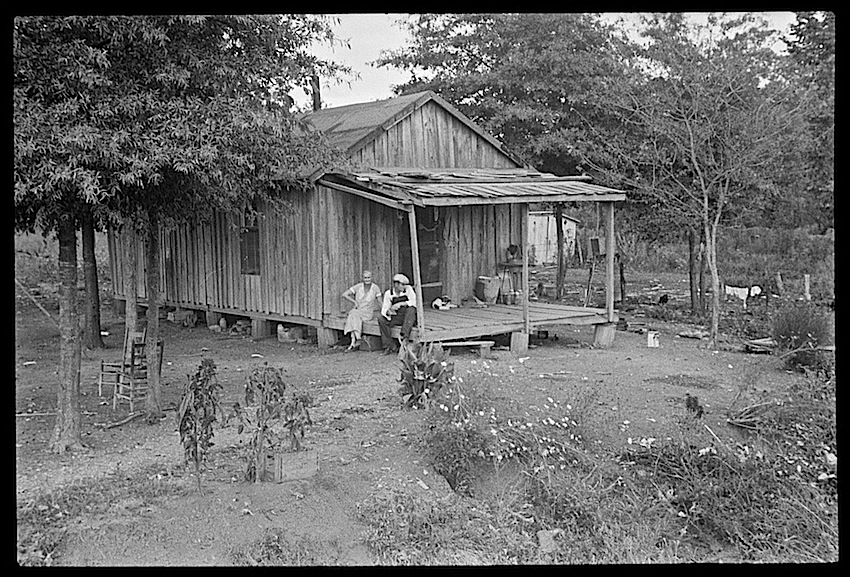In the depths of the Great Depression, a bold social experiment unfolded in the Arkansas Delta. Known as the Dyess Colony, this federally funded community provided struggling white families with a lifeline—land, a home, livestock, and a chance at self-sufficiency. Yet beneath its hopeful narrative lies a more profound, more complicated truth: Dyess was not just a New Deal project. It was a racially exclusive echo of a broken promise once made to newly freed African Americans—a promise remembered as “40 acres and a mule.”
Building a Colony: The Founding of Dyess
Dyess, Arkansas, was established in 1934 as Colonization Project No. 1 under President Franklin D. Roosevelt’s New Deal. The aim was to resettle poor farmers, uprooted by the Dust Bowl and economic collapse, onto fertile land where they could rebuild their lives.
Named for William Reynolds Dyess, Arkansas’s first administrator of the Federal Emergency Relief Administration (FERA), the project was the largest agrarian resettlement community in U.S. history. Covering over 15,000 acres, it housed around 500 families, each receiving 20 to 40 acres of land, a furnished home, a barn, a smokehouse, a privy, and even electrical wiring—luxuries for the time.
The community was meticulously planned with a wagon-wheel layout, radiating from a central hub that included a school, hospital, cooperative store, cotton gin, cannery, and administrative buildings. Residents farmed cotton and vegetables, shared in profits from cooperative businesses, and repaid the government with produce and labor. It was, in essence, a rural utopia for white farmers—a federal hand up, not a handout.
A Link to “40 Acres and a Mule”
To understand Dyess’s deeper historical resonance, we must go back nearly 70 years, to the end of the Civil War. In January 1865, Union General William T. Sherman issued Special Field Order No. 15, promising each freed Black family “40 acres and a mule” along the Georgia and South Carolina coasts. It was a brief, radical moment of land redistribution designed to help former slaves achieve economic independence.
But the promise was short-lived. Later that year, President Andrew Johnson overturned the order, returning confiscated Confederate lands to their former white owners. Tens of thousands of freedmen were evicted, and the federal government abandoned reparative efforts. The phrase “40 acres and a mule” became a lasting symbol of broken promises and systemic injustice.
The structure of Dyess eerily parallels what was envisioned in 1865—only this time, it was fully funded, politically supported, and racially restricted. The New Deal’s progressive promise came with the same old racial exclusions.
A Legacy of Unequal Opportunity
Dyess stands today not only as a historical site but as a case study in the contradictions of American policy. On one hand, it represents a successful, innovative attempt to uplift struggling rural families through land ownership, communal infrastructure, and cooperative economics. On the other hand, it reveals how race has always shaped who gets rescued and who gets left behind.
African Americans who were promised land in 1865 never received it. Many remained trapped in cycles of sharecropping and poverty well into the 20th century. Meanwhile, in Dyess and dozens of other New Deal communities, white families received land, homes, and federal support that helped launch future generations into greater stability.
To wrap up
Dyess, Arkansas, was a federal experiment in rural rehabilitation—a glimpse into how land and opportunity can transform lives when governments invest in their people. Yet its racial exclusivity reminds us that America’s social programs have often reinforced the very inequalities they sought to overcome.
By comparing Dyess to the promise of “40 acres and a mule,” we see how the tools of justice were available, but selectively distributed. Dyess fulfilled a dream—but not the one originally promised in the wake of slavery.
References
1. Schweninger, Loren. Black Property Owners in the South, 1790–1915
- This scholarly work details the broken promise of “40 acres and a mule,” primarily examining how the land briefly allocated to freed people under Sherman’s Special Field Orders No. 15 was later rescinded by President Andrew Johnson. It also contextualizes federal land policy by race.
- University of Illinois Press, 1990
- ISBN: 9780252061561
2. Kirby, Jack Temple. Rural Worlds Lost: The American South, 1920–1960
- Kirby gives a comprehensive view of federal New Deal programs in the South, including the Resettlement Administration and the establishment of the Dyess Colony in Arkansas. He discusses how Dyess was designed to aid poor white farmers and systematically excluded Black farmers.
- Louisiana State University Press, 1987
- ISBN: 9780807113348
3. Sitkoff, Harvard. A New Deal for Blacks: The Emergence of Civil Rights as a National Issue
- Sitkoff critically analyzes how New Deal programs like Dyess often benefited white Americans disproportionately, despite claims of equity. He contrasts this with the earlier failed promise of land redistribution during the Reconstruction era.
- Oxford University Press, 2009
- ISBN: 9780195367151
